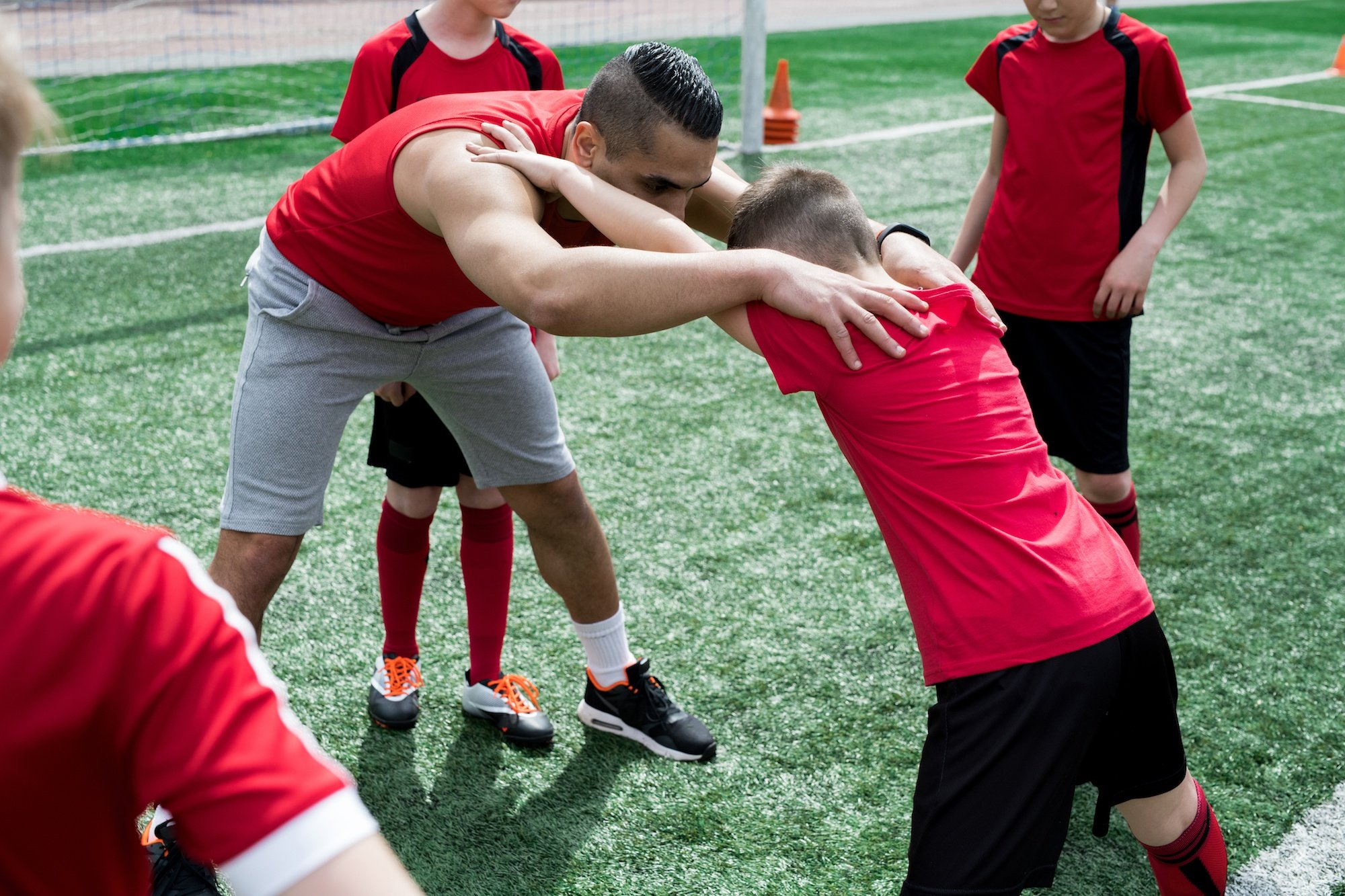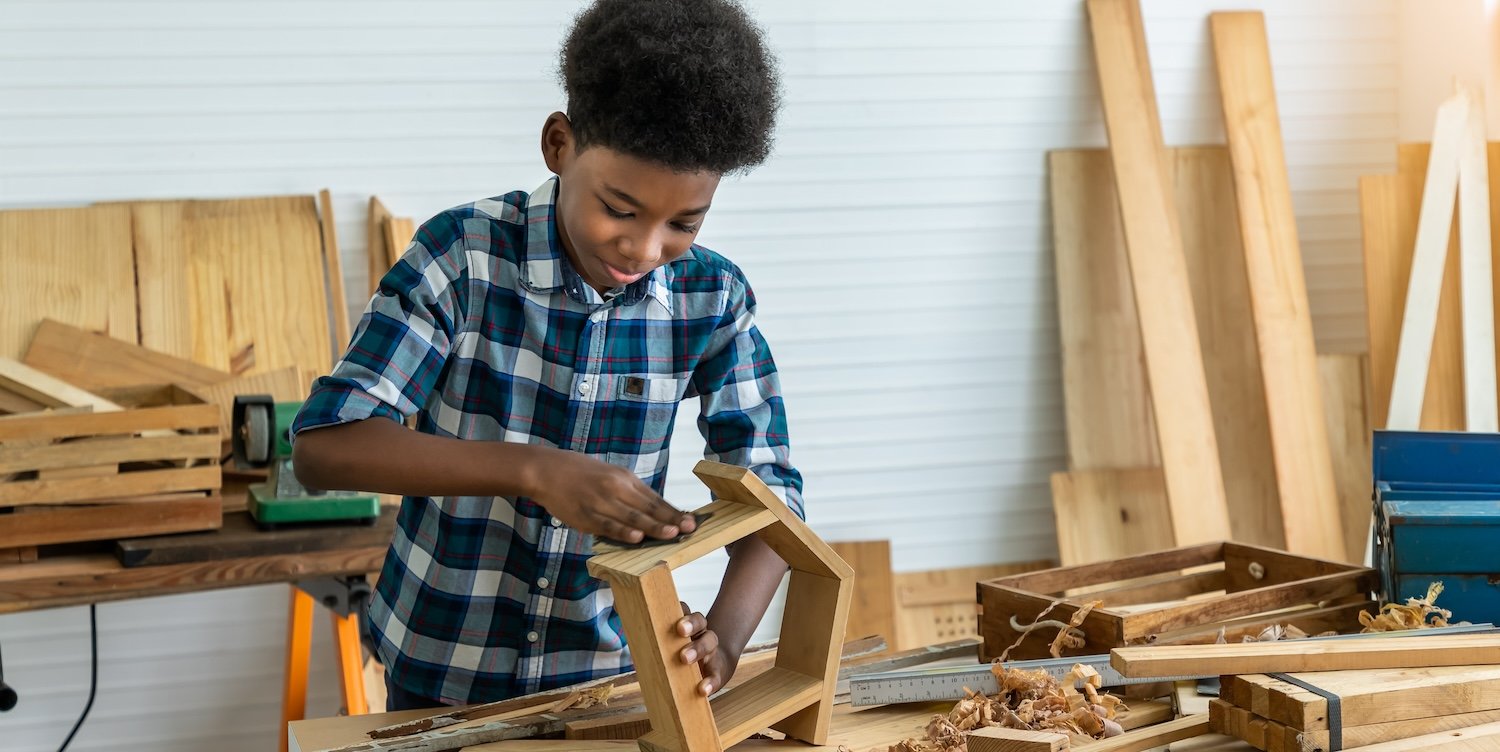Safe Development of Young Athletes

Athletes want to be successful. They want to win and at times are willing to do whatever is necessary to make that a reality. We’ve seen the stories, watched the news, and stared at the images of athletes holding the championship trophies, celebrating the culmination of all the hard work they’ve put forth for that moment, the moment they’ve become champions.
Our media-savvy children see these messages and, for many, it piques their interest in athletics. As a parent, you may wonder how to support your young athlete. Coaches are responsible for the health and well-being of athletes. In my experience as a coach, I find the best way to develop young athletes is through comprehensive strength and conditioning programs, so they learn how to reduce injury, improve movement quality, and increase work capacity.
Scientific research clearly tells us that young athletes can enhance physical performance and reduce injury risk when trained appropriately. Younger athletes are a unique population, routinely exposed today to sport-specific training and extensive competitive schedules at an early age, at the same time they are experiencing a wide range of physical, physiological, and psychological changes as a result of growth and maturation.
Know Your Athlete
Successful coaches understand that they must adjust their coaching and programming to fit the level of athlete they are coaching. I have worked in sports for over two decades at every level of competition: high school, college and professional ranks. This experience allows me to see human growth and maturation firsthand and impacts how programs are designed for each age. I believe in process over outcome and the importance of being patient as we develop our young athletes.
I use a combination of “Long-Term Athlete Development” and “Youth Development Model” to identify practical pathways for young athletes. We implement programming based on coaching observations and experiences, science, human growth rates, and maturation. This provides us with a framework to guide participation, training, competition, and recovery pathways in sport and physical activity. Its focus is on the needs of an athlete and his individual stages of development. It also provides a point of reference for student-athletes, coaches, parents, administrators, and others involved in supporting the pursuit of sport at all levels.
The Value of Variance
The landscape of childhood and adolescent athletics has changed drastically. The level of intensity in youth sports is on the rise, prompting more competitive events at younger ages, specific training, and sports specialization. According to a recent study in the American Journal of Sports Medicine, male teens between the ages of 15-19 account for almost 60% of all “Tommy John” surgeries to reconstruct elbow ligaments. Evidence is increasingly showing that athletes who specialize in one single sport year-round tend to be at a higher risk of injury.
Contrary to popular belief, considerable evidence shows that an early age, high-performance athletes sampled many sports rather than specialized in one. For example, 90 percent of all athletes selected in the first round of the 2016 National Football League draft were multi-sport athletes in high school. Things to keep in mind when thinking about sports specialization: adults influence the decision to specialize, specializing in sports leads to clinical injury risks, sampling multiple sports has potential benefits as players get older, and college coaches generally prefer athletes who play multiple sports.
Youth Resistance Training
For years, the development of strength and power in youth has been a source of great debate, yet, despite earlier misconceptions, there is now a wealth of evidence supporting the use of resistance training by both children and adolescents. It’s unrealistic to eliminate all injuries related to sport and physical activity; however, sensible, progressive, age-specific resistance training programs may help to reduce the likelihood of injuries in the young athlete.“Strength is an essential component of all human development and its formal development can no longer be neglected in the preparation of any athlete.” A resistance training program will increase an athlete's ability to produce muscular force against an external resistance. The external resistance can be your own bodyweight, dumbbells, rubber tubing, or any other object that causes the muscle to contract.
Before beginning a resistance training program for young athletes, it’s important to take into consideration chronological, biological and training age. There are marked differences in age and obvious limitations when these young athletes are training in the same group. By having coaches design age-specific programs, athletes follow progressions that minimize injury and enhance performance. The resistance training program begins with relatively light loads and always focuses on the correct exercise technique. Training should happen 2-3 times per week on non-consecutive days, incorporate specific exercises that strengthen the abdominal and lower back region and focus on symmetrical muscular development and appropriate muscle balance around the joint.
Getting Ready for Competition
Physical preparation depends on the physical demands of the sport, the role, and position to be played by the athlete, and competition schedule. In the context of sport, athlete readiness is the state of being fully prepared for an event or competition. As a coach responsible for the health and well-being of athletes, I work to enhance the performance of the athlete during competition. To that end, coaches take a variety of approaches to train and monitor load with the understanding that if we provide the right stimulus, it will lead to increased physiological adaptation and improved performance.
As we look to improve athlete performance and elevate the standard of training, the importance of efficient and well-balanced training becomes critical to a team’s success. Athlete readiness allows us to be more measured and results-oriented as we educate student-athletes and parents on three simple strategies that require careful attention and can have a big effect on competition performance: sleep and rest, fuel and recovery, and warm-up.
Sleep and Rest
Lack of sleep is considered one of the top reasons for poor performance and risk of injury in sport. Some of the most compelling evidence of the benefits of adequate sleep and its effect on athletic performance come from studies with the Stanford University men’s basketball team and the United States Olympic Committee. The evidence is clear. Athletes perform better when they get regular and optimal amounts of sleep. Most experts recommend that athletes strive for 9 to 10 hours of sleep each night.
Today’s student-athletes have daily multiple commitments, so it becomes important that we help them with nightly sleep routines prior to going to bed. Successful routines athletes and parents can use include: no technology 30 minutes to an hour before bedtime, dim lights in the bedroom, warm showers, no smartphones next to the bed, and mindfulness practice. These strategies can help the athlete unwind from the day and allow for more uninterrupted sleep cycles throughout the night.
Fuel and Recovery
Every day dozens of athletes walk through our doors in search of improvements in power, strength, and speed, as well as better recovery strategies. Most of the time the easiest way to amplify their training is through optimized nutrition. The goal is to fuel the body with the correct nutrients to improve training effort and accelerate the athlete’s ability to reach daily and weekly goals. We share a daily fueling schedule to maximize our efforts when not training or competing. Our philosophy when it comes to performance nutrition is simple. It is the food we provide, at the right time and in the right quantities that impacts strength, speed, stamina, recovery, and injury prevention.
Food provides the energy and the nutrients for working muscles, and improving cognitive health and hydration. Eating is strategic. It fuels the brain and body for daily exercise and mental acuity. It is also functional, helping the body recover, restore and replete overnight. Helping athletes understand the importance of performance eating makes it easier for them to embrace a nutrition philosophy. Education helps athletes take ownership of their food choices and eating habits, and makes clean eating and fueling a part of their daily routine.
Warm-ups are Essential
You can learn a lot about an athlete and how he’s been coached by the way he warms up prior to training and competition. The warm-up is all about increasing body temperature and is key in how an athlete prepares. It’s a good way to evaluate the current range of motion and flexibility and allows the coach to adjust the workout based on the athlete’s energy levels, tightness, mobility, soreness, aches, and alertness. The problem is that most coaches don’t understand the importance of these initial 15-20 minutes of a training or practice session. The warm-up is not lost time from practice. It is essential to the training session.
I make sure all of my athletes are prepared and ready for practice and competition by designing warm-ups that improve efficiency and remove deficiencies. Athletes in our program tend to find that our warm-up is almost like a workout, because of how thorough and extensive it tends to be. The warm-up provides opportunities to improve work capacity and neuromuscular patterns, to correct asymmetries, to increase range of motion, and to create emotional balance. It provides an opportunity to be mindful of what we are trying to accomplish and how we prepare their bodies for enhanced performance.
Building the Foundation
Developing young athletes is a process that takes time and patience. Athletes develop and mature at different stages. Children and adolescents should be encouraged to participate regularly in play, games, sports, and planned exercise in the context of school and community activities. Not only is physical activity essential for normal growth and development, but also youth programs that enhance fundamental movement skill performance early in life appear to build the foundation for an active lifestyle later in life.
I hope that these simple concepts in athlete development can provide a bit of context as to the complexity of training athletes from different age groups, experience, and biological maturity. The injury rates in young athletes are staggering and on the rise over the last five years. Sports sampling, youth resistance training, and athlete readiness provide our young athletes a safer and systematic approach to development, so they have the foundation to accomplish great things.
Carlo Alvarez, strength and conditioning coach at University School, works closely with all athletes and coaches, bringing his extensive experience in emotional, mental and physical development to equipping each boy to maximize his academic and on-the-field success. He has served as the Director of Sports Performance for both the Pittsburgh Pirates and the Cincinnati Reds, and on the strength and conditioning staffs at both the University of Notre Dame and the University of Cincinnati.


%202.jpeg)
